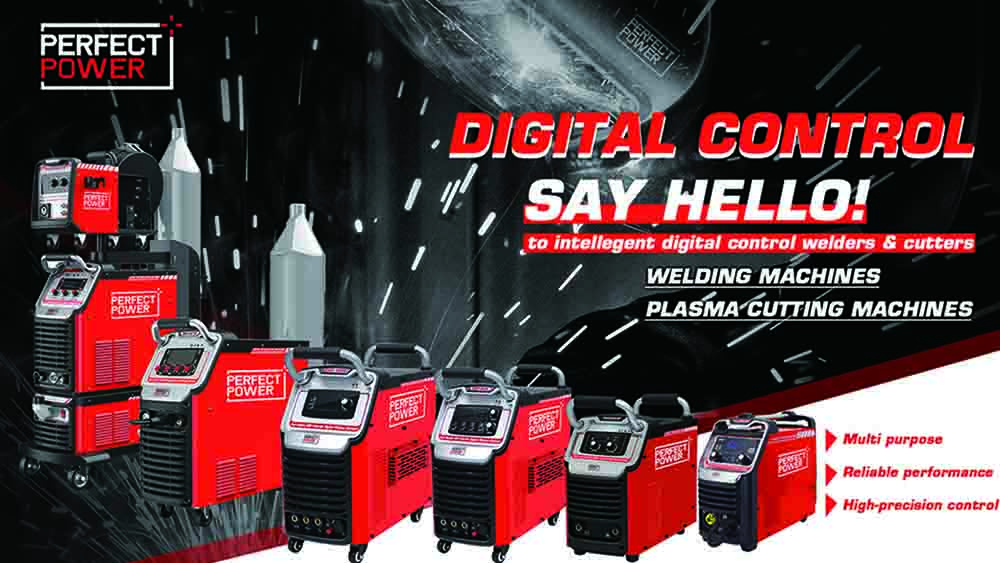
In the world of welding, technological advancements have revolutionized the way we join metals together. One such innovation that has gained significant popularity is the multi-process welder. With its ability to perform various welding processes using a single machine, the multi-process welder has become a game-changer in the industry. In this article, we will delve into what a multi-process welder is, how it works, and the diverse range of tasks it can accomplish.
Learn Multi-Process Welders
A multi-process welder, also known as an all-in-one welder or multi-function welder, is a versatile welding machine that combines multiple welding processes into a single unit. Traditional welding machines typically specialize in a single welding technique, such as MIG (Metal Inert Gas), TIG (Tungsten Inert Gas), or Stick welding. However, a multi-process welder is designed to offer the flexibility of switching between these different welding methods, catering to various project requirements and materials.
Components and Mechanisms
Multi-process welders are equipped with a range of components that enable their adaptability. These components include:
- Power Source: At the heart of the machine, the power source generates the necessary electrical energy for welding. It supplies the current and voltage required for the specific welding process being employed.
- Control Panel: The control panel provides a user-friendly interface that allows welders to adjust settings such as current, voltage, wire speed, and gas flow. This customization ensures optimal welding performance for different materials and joint configurations.
- Feed System: For processes like MIG welding, a feed system is integrated to control the continuous feeding of the welding wire. This system ensures a consistent and precise weld bead.
- Gas Supply: Multi-process welders may require shielding gases for certain processes like MIG and TIG welding. The gas supply mechanism ensures that the weld zone is protected from atmospheric contamination, resulting in high-quality welds.
Versatility in Welding Processes
One of the most significant advantages of a multi-process welder is its ability to handle various welding techniques. Let’s explore the key processes that a multi-process welder can execute:
- MIG Welding: Multi-process welders can perform MIG welding, which involves melting a consumable wire electrode to create a strong weld between metals. This process is particularly effective for applications requiring high productivity and speed.
- TIG Welding: With TIG capabilities, the welder can produce precise and clean welds by using a non-consumable tungsten electrode to create an electric arc. TIG welding is preferred for projects where aesthetics and precision are paramount.
- Stick Welding (SMAW): Also known as Shielded Metal Arc Welding, stick welding is widely used for its simplicity and versatility. Multi-process welders equipped with stick welding capabilities can create robust and durable welds even in challenging conditions.
- Flux-Cored Arc Welding (FCAW): Some multi-process welders support FCAW, a process similar to MIG welding but with a flux-cored wire that generates its own shielding gas when melted. This makes it suitable for outdoor and windy environments.
- Multi-Process Flexibility: Advanced multi-process welders can combine these primary techniques to create hybrid processes, allowing welders to address complex projects that demand multiple approaches.
Advantages of Multi-Process Welders
- Cost-Efficiency: Investing in a multi-process welder eliminates the need for multiple specialized machines, reducing equipment costs and saving the workspace.
- Space Savings: The compact design of multi-process welders saves valuable workshop space, making them suitable for small workshops and mobile welding setups.
- Time Savings: Welders can seamlessly switch between processes without the need for extensive setup changes, resulting in increased productivity.
- Adaptability: From automotive repair and construction to artistic fabrication, a multi-process welder adapts to a wide array of welding applications.
- Skill Enhancement: Learning to operate a multi-process welder enhances a welder’s skill set and versatility, making them more employable and capable of tackling diverse projects.
CTMG-418PS 6 IN 1 MULTI-FUNCTIONAL WELDING MACHINE Offers Excellent Value

CTMG-418PS Multi-Process welder is a 6 in 1 welder with MIG, Pulsed MIG, Flux Cored Wire Welding, HF TIG, CUT, and MMA functions. It has a fully digital control system, intelligent synergic control, and adjustable welding parameters. The machine also features safety measures like adjustable VRD control and overheat protection. It’s perfect for aluminum welding with a 100% success rate for arc ignition and spatter-free welding.
Applications of Multi-Process Welders
The versatility of multi-process welders opens the door to numerous applications across industries:
- Automotive Repair: Multi-process welders are ideal for repairing automotive components, whether it’s MIG welding a damaged car frame or TIG welding delicate exhaust systems.
- Structural Fabrication: From constructing steel frames to assembling metal structures, multi-process welders can handle various joint configurations and thicknesses.
- Artistic Welding: Artists and sculptors can harness the precision of TIG welding and the versatility of stick welding to create intricate metal artworks.
- Pipe Welding: Multi-process welders are employed in pipe welding, accommodating the diverse welding demands of pipes with varying diameters and materials.
- Home Improvement: Whether it’s repairing a metal gate or building a custom barbecue grill, a multi-process welder is a valuable tool for DIY enthusiasts.
In the ever-evolving world of welding, the multi-process welder stands as a testament to innovation and adaptability. Its ability to seamlessly switch between various welding processes empowers welders to tackle a wide spectrum of projects with efficiency and precision. From hobbyists to professionals, the multi-process welder has found its place as a versatile and indispensable tool, shaping the future of metal fabrication and joining techniques.



